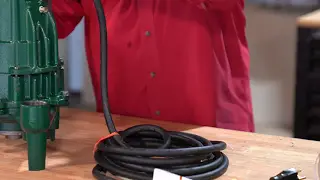Your tools are essential to your success as a plumber, but outdated ones can slow you down and make your job harder. Upgrading to modern tools can save you time, reduce effort, and improve work quality. Here’s a list of plumbing tools to replace and their superior alternatives.
1. Plumb Bob → Laser Level
Old Tool: A plumb bob helps align holes and anchors vertically but requires manual adjustment and precision.
Upgrade: A laser level projects straight lines both vertically and horizontally, self-leveling even on uneven surfaces.
Why It’s Better: Saves time, eliminates guesswork, and is versatile for multiple applications.
2. String Line → Laser Line Level
Old Tool: String lines align pipes along a wall but can be difficult to maintain.
Upgrade: A laser line level with magnets marks exact elevations and guides pipe placement effortlessly.
Why It’s Better: Provides precise, hands-free alignment.
3. Keyhole Saw → Oscillating Multi-Tool
Old Tool: Keyhole saws are great for cutting drywall but are time-consuming and exhausting.
Upgrade: An oscillating multi-tool with interchangeable blades for cutting drywall, wood, and nail-embedded materials.
Why It’s Better: Makes faster, cleaner cuts with less physical strain.
4. Magnet or Knocking on Walls → Wall Scanner
Old Tool: Using a magnet or knocking on walls to locate studs, water lines, or electrical cables is imprecise.
Upgrade: A wall scanner like Wallbot detects studs, wires, and pipes behind walls.
Why It’s Better: Reduces the risk of damaging hidden utilities while cutting or drilling.
5. Hand Saw → Portable Band Saw
Old Tool: Hand saws require significant effort and time to cut Unistrut, all-thread, and pipes.
Upgrade: A portable band saw allows clean, quick cuts on a variety of materials.
Why It’s Better: Saves time and delivers precise cuts with minimal effort.
6. Soldering Kit → ProPress System
Old Tool: Traditional soldering kits with torches, flux, and solder are essential for certain jobs but can be time-consuming.
Upgrade: The ProPress system creates secure, leak-proof connections without heat or open flames.
Why It’s Better: Faster, safer, and more efficient for modern plumbing installations.
7. Traditional Pipe Cutters → Automatic Pipe Cutters
Old Tool: Manual pipe cutters work well but require significant hand strength and precision.
Upgrade: Automatic pipe cutters make quick, clean cuts with minimal effort.
Why It’s Better: Reduces strain and speeds up the cutting process.
8. Inspection Mirror → Borescope Camera
Old Tool: Inspection mirrors are useful for checking hard-to-see areas but are limited in scope and clarity.
Upgrade: A borescope camera allows you to visually inspect pipes, valves, and other hidden areas on a screen.
Why It’s Better: Provides clear visuals of hard-to-reach areas, saving time and improving accuracy.
9. Plunger → Kinetic Water Ram
Old Tool: Plungers are effective for clearing clogs but can be messy and labor-intensive.
Upgrade: A kinetic water ram uses compressed air to blast clogs out of pipes.
Why It’s Better: Faster and more effective, especially for stubborn clogs.
10. Steel Pipe Wrench → Aluminum Pipe Wrench
Old Tool: Steel pipe wrenches are durable but heavy and cumbersome.
Upgrade: Aluminum pipe wrenches are 40% lighter and just as strong.
Why It’s Better: Easier to handle, reducing strain during extended use.
Final Thoughts
Upgrading your plumbing tools can make your work faster, safer, and more efficient. While some classics still have their place, modern tools often provide better results with less effort. If you’re still using outdated tools, now’s the time to invest in your craft and elevate your efficiency.




